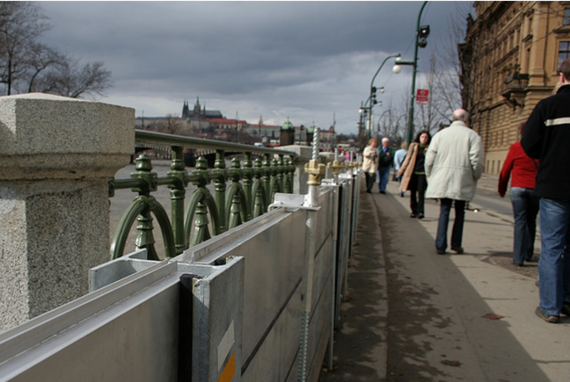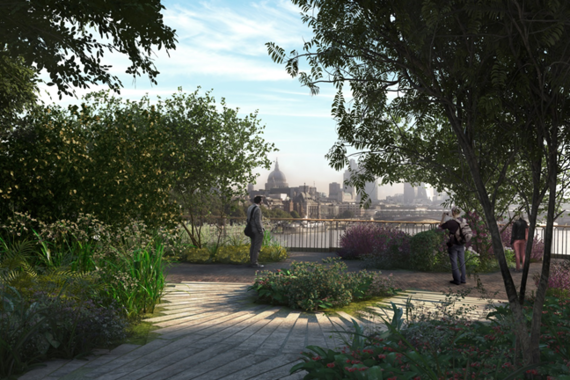Why I Returned To The TED Stage- TEDxZwolle- Climate, Activity, Cities
After delivering my first TEDx presentation at the O2 in London last October at the amazing TEDxTeen event I did not envisage that I would be returning to that prestigious stage so soon.
After watching my "game-changing" presentation on how to talk about climate change organisers of TEDxZwolle invited me to talk some more.
In my first TEDx talk I asked the question "What is the first word you think of when you hear climate change?" My top 3 guesses at your answer would be Carbon Dioxide, Greenhouse Effect and Global Warming. Am I right?..
Climate change has been communicated in the wrong way. For me and many people that I've talked to in my 10 years of climate change work the topic has become scientific and far-removed from everyday life- the most common words used to talk about it show this.
We need to change the conversations we have about climate change and talk about it as a topic which is affecting our everyday lives. Talk number one neatly summarised there.
TedxTeen "Why I Don't Care About Climate Change" Oct 2014
Now in the time in between then and now I've continued my work on climate change and my life. And I've realised that there is another barrier to why a lot of us think climate change is an issue which doesn't seem to affect us.
I think that this climate apathy is partly due to city life. In 2008 this planet reached a tipping point when more people live in cities than don't. We are now an urban species.
The rate of urbanisation is increasing and in 2013 the UN Human Settlement Programme estimated urban populations will double by 2050.
With so many of us living in cities and urban environments it is all too easy to become disconnected with the natural world around us.
Our cities are imagined to exist in bubbles and there is little thought of the natural world which provides the essentials for city life, from the water we drink and the food to eat to the energy which fuels this lifestyle.
The closest most of us come to interacting with the natural world on a daily basis is talking about the weather!
Climate change is a problem with a natural system so no wonder that climate change is generally still viewed as a problem which affects other people but rarely yourself when we live so disconnected from nature.
This isn't the case for everyone and it was during a conversation with a farmer from Leicestershire when I realised this. We started chatting about what I do and climate change naturally cropped up, he then went on to tell me how he had noticed the weather patterns changing where he lived. How summers were becoming drier and how wind patterns were changing. He had noted these things not because he was a climatologist but because he was in touch with the natural world every day of his life.
It was this experience which inspired me to write the script for my second TEDx talk "'Find Your Wild Side To Tackle Climate Change"
For most of us city dwellers we need reminders that our everyday lives are connected to the natural world, for me this reminder came in the form of catastrophe. In floods in North Yorkshire in 2005 which destroyed communities and left lasting reminders of the power of nature.
But I have found that these reminders can be gentler and can be part of the city infrastructure.
Now I couldn't possibly think of a more appropriate place to host a TEDx event relating to climate challenges and sustainable cities than in the Netherlands where parts of the country lie a whopping 6m below sea level.
In Zwolle, where this TEDx event was hosted, the dykes play an important role in the protection of the city and in the everyday city experiences of residents. Flood defences can act as powerful reminders of the natural world and by integrating them into the everyday experience of people it can help cement an appreciation for our planet.
In city spaces across the Europe and US I have found that urban wildness can offer this reminder for people.
I talk about urban wildness to mean green spaces within cities where people can take a few minutes out of their hectic urban lives to pause and to interact with nature.
Wildness doesn't simply mean the heavily managed green spaces in the city such as mowed grass in parks and formal planting in pots outside posh hotels. Rather wild spaces are places where nature shouldn't be there, where the presence of a garden might be surprising and intriguing.
The impact of these spaces is far more than their physical benefits of creating a space for wildlife in the city and offsetting small amounts of carbon. Inner city wilderness can offer a therapeutic space for people, reduce stress and empower people to think about nature in everyday life.
This is where some of my social enterprise work features as for the past few years I have been working across Northern England to reinvent this element of wildness into urban gardening with my ROOTS project. I have transformed derelict inner-city spaces into gardens and most recently changed part of the historic grounds of Durham University into a vibrant wild space.
The High Line in New York and The Garden Bridge scale up these ideas of wildness and blend nature into the fabric of everyday city life. Both of these project can be used as a pedestrian route across the city where users can invite nature into their daily routine for a few minutes. I fully support projects which bring elements of nature into the heart of the city and invite people to rediscover the natural world in the often bleak and concrete city-scape.
Although urban wildness is very exciting its not the only way that we can reconnect with nature. We can find our very own wild side simply by being a bit more open-minded and imaginative in our daily lives. Try this simple exercise of thinking more about nature in your daily routine.
When you turn on that tap just use your imagination and think about the journey that water has come on and appreciate it as a natural resource. That water could have flowed from snow melt from the highest peaks of a grand mountain range, crashing along mighty rivers and babbling brooks to finally reach your tap.
When you turn on that light or drive your car think about the emissions that energy production might be causing and how those gases are contributing to climate change.
This is not an exercise to make you feel constantly guilty about urban life but rather it is an exercise to make you more aware that the life you lead is intimately connected to nature even though it may not seem it on first instance.
It is only when we fully appreciate that the natural world affects us and we affect it when we can move to meaningful action on climate change.
We need to change our mind-set in order to go past the convenient but limited changes to our lives and instead live in a truly sustainably way which is in tune with the planet.
Go on, expand your perception, rediscover nature and find your Wild Side.



